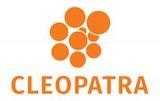hi there everyone i am so honored to share information with you guys...
i have project with the following given information::
- project BOQs
- Resources productivity.
my approach at least "theoretically" with this project was as following:
- getting the "Project Cost" from BOQ
- and getting "Activities Duration" based on productivity of the resources assigned .
so i rolled up my sleeves ..and opened up Primavera p6 and did the following:
- Duration type =fixed units.. to go with the fixed BOQ that i have "although i feel like even fixed units/time works as well" ..but whatever ...
- i defined the BOQ as material resources.
- and i defined resources (labor &non labor) units/time as per productivity requirements not calendar requirements which is 8h/d
for example:
for my steel fixer team i assigned thier units/time=225h/d
as if 225kg/d
Now my questions:
- is this a good practice.
- how does that affect my resource usage profile in terms of overallocation units.
your prompt response will be very highly appreciated
best regards









Replies